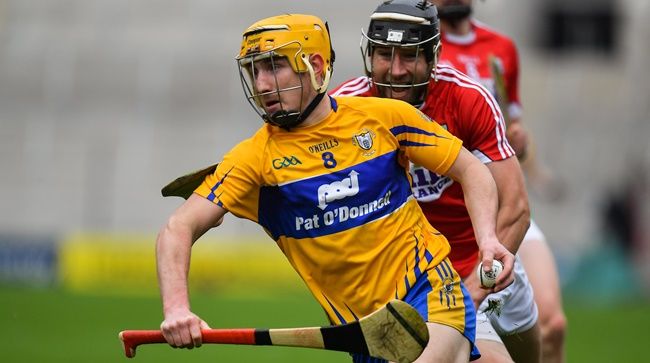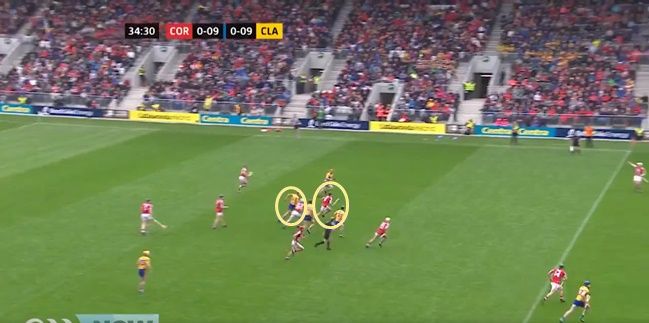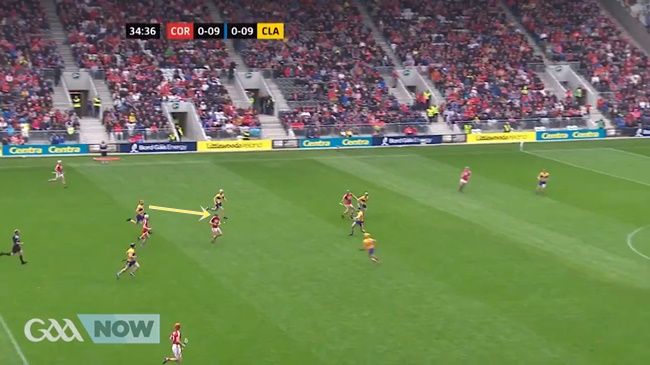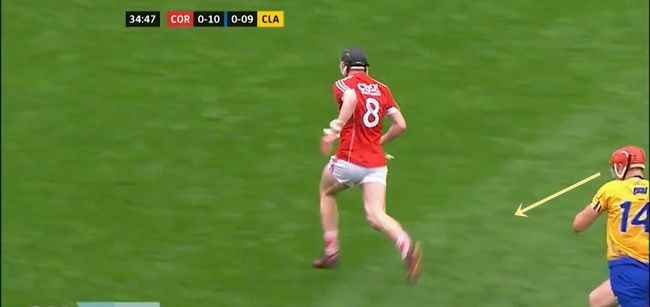Colm Galvin has been playing this game for years now.
He begins his day in the middle of the field for the throw-in but you won’t be able to pin the Clare man down again. Marking his man is never really a priority of his because once that first ball is sent down either end, Colm Galvin is playing off instinct now.
And it must be fairly confusing for the man tasked with the unenviable job of picking him up for the day. Because not only has Colm Galvin a seemingly bottomless pit of energy in reserve all the time, but the jinky spark with the bright yellow helmet also has the freedom.
The freedom to roam, the freedom to float, the freedom to sting, and if you’ve been following the Clare hurlers over the last few years, you know that he always stings. Stings for a few points, a few crucial interceptions at the other end of the field. Then you begin to realise that his managers would be foolish if they didn’t pass him down this licence to do whatever the hell he wants.
Opposition teams have tried to curb his influence with tight markers, with spoilers, of course they have, but the Clonlara schemer is never on the periphery for too long.
Colm Galvin has changed the game, and that’s the modern day midfielder now.
That’s why, on Sunday in Clare and Cork’s Munster championship first round clash in Páirc Uí Chaoimh, the four midfielders on show scored 1-9 from play between them.
Galvin’s partner in crime Tony Kelly plays a similar role. So did Darragh Fitzgibbon and to a lesser extent, Bill Cooper.
Playing as a hurling midfielder now is a bit of a free ticket, as teams begin to question the point of trying to mark the unmarkable. Lads obviously have defensive responsibilities, but much of that’s off instinct too.
Darragh Fitzgibbon more than matched Tony Kelly and Colm Galvin at their own game on Sunday.
He popped up everywhere and anywhere on his home turf on Sunday. The 20-year-old zipped around the place, prowling for a breaking ball, a loose ball, any kind of ball, and once he got it in his hand, he would put the head down and hare down the jugular.
It didn’t matter a damn how far he had to go because like road runner he would set off and nobody could catch get close to he who must be the fastest man in the game. He scored three points, set up a few more and hurt the Banner boys all day long.
Given the freedom that players like Fitzgibbon can now exploit, it’s the job of whoever’s closest to them when they pick it up to try to track them.
Clare are a fast team, and that only makes it all the more regrettable then, that their big target man Peter Duggan was the one who was most often chasing Fitzgibbon’s elusive tail.
For two of Fitzgibbon’s three scores, the big, burly Clooney-Quin attacker was left trailing in his destructive wake.
Indeed, for the first of those, Duggan attempted to rectify his own fluffed attempt at rising the ball by chasing the Charleville colt.
Within six seconds, the UCC student had left the Clare man broken and almost ten metres behind him.
He went onto tap over a point.
Cork's Darragh Fitzgibbon bursts out of defence and scores a fantastic point! pic.twitter.com/p7b04f7g3o
— The GAA (@officialgaa) May 20, 2018
Duggan was wondering what more he could do, and we could all feel his pain as he dropped his head to the floor, pleading for his legs to move quicker than they were.
He knew he had no chance of making the ground back up, as he looked to the floor and Fitzgibbon’s heels for mercy.
He was back for more in the second half, again left in Fitzgibbon’s vapours. He got closer to him this time, but still no cigar.
Watch from 1.10 on this GAA video.
Cork have beaten Clare in the first round of the MSHC. Watch GAANOW’s full-time highlights here! pic.twitter.com/qftiSVF7OM
— The GAA (@officialgaa) May 20, 2018
Gone are the days when midfielders were big, bulky destroyers. Now they’re small, nippy deceivers.





















































